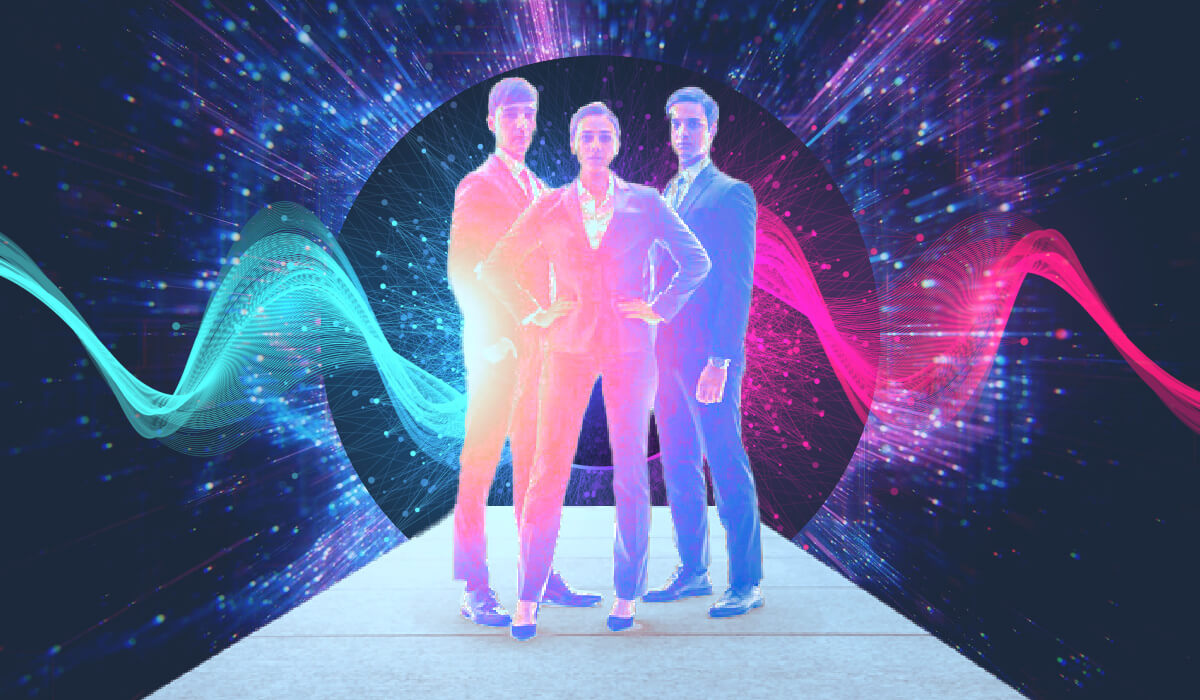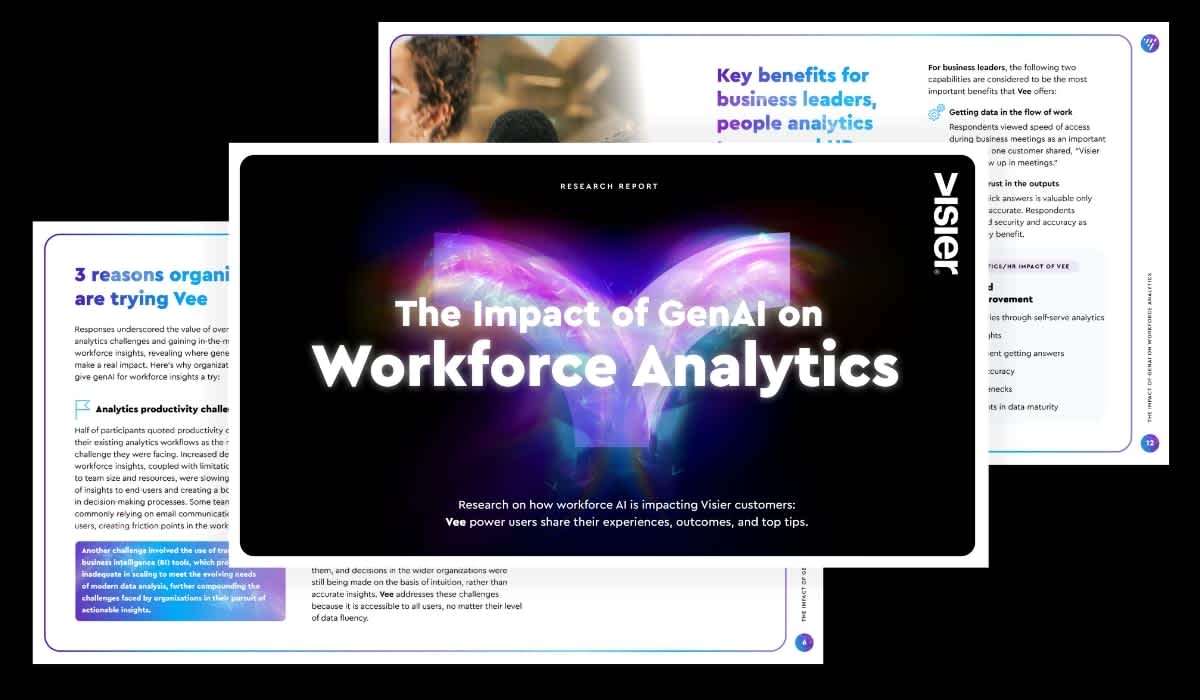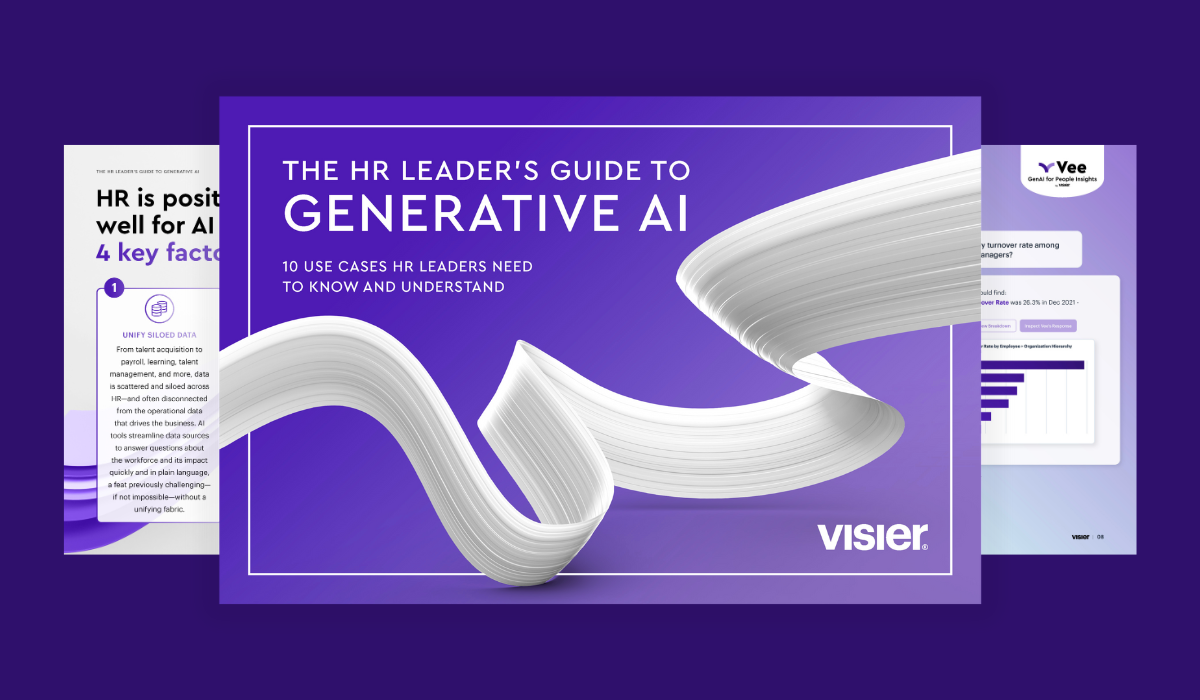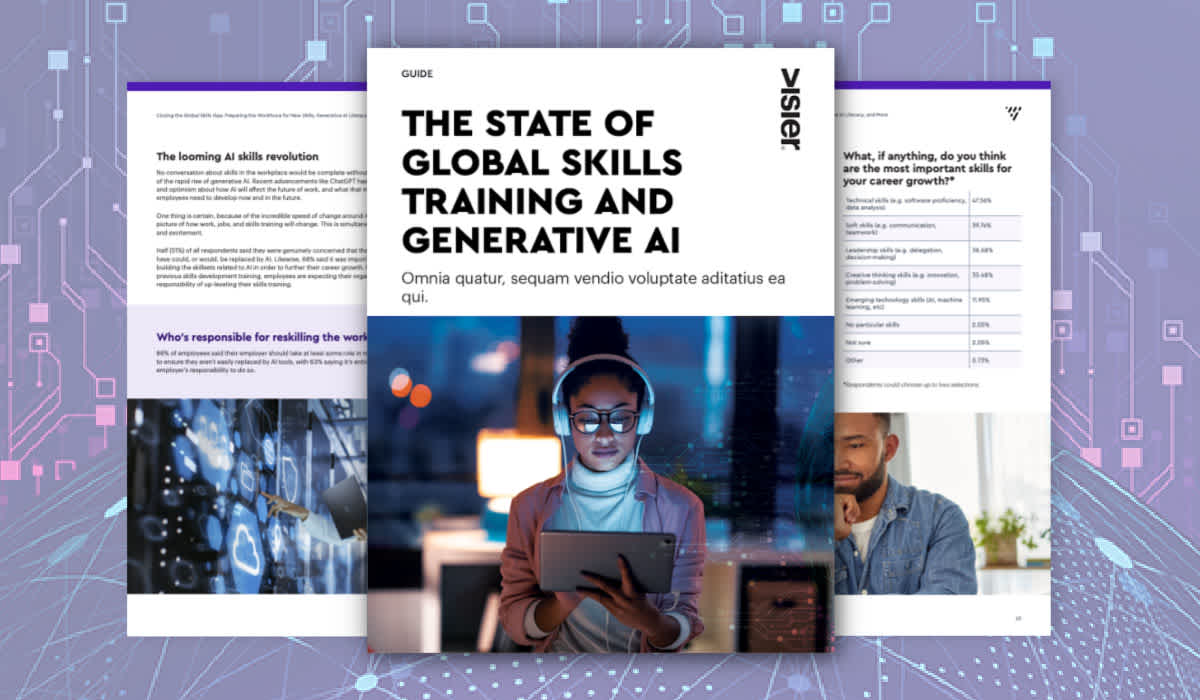How Generative AI and HR Are Reshaping the Future of Work
To keep up with the future of work, HR leaders need a strategy that's agile, adaptable, and rooted in data. GenAI can help close the gap between people data and business data. Here's how.

The “future of work” is a phrase that refers to what organizations can anticipate in terms of the impact that technology is and will have on how work is done. In truth, it’s somewhat of a misnomer, because some might argue that the future is here!
Technology, and specifically generative AI (genAI), has had a massive impact on the workplace visand a wide range of jobs since it first emerged to widespread adoption in late 2023. Today’s workplaces are arguably undergoing the most significant transformation since the Industrial Revolution.
The pace of change has been rapid and is ongoing. AI is impacting the future of work, changing roles, requiring new skills, and impacting productivity.

How AI is reshaping the future of work
At this point, the future of work is anybody’s guess, but one thing is certain: It will be significantly influenced by AI, including genAI.
AI and automation acceleration
AI is automating tasks, impacting job roles, and accelerating productivity beyond just the employee level, encompassing the entire workforce and business. This is a shift that represents an evolution in how businesses operate and compete.
During the Industrial Revolution, early automation was focused on replacing repetitive manual tasks. Today, though, AI systems are addressing more complex processes, reflecting a multiplier effect that is amplifying workforce capabilities at every level and across multiple roles.
The HR function has seen a significant impact here. HR teams can now turn to AI assistants to help with tasks ranging from drafting job descriptions, to screening resumes, to personalizing onboarding materials, and even conducting candidate interviews--and much more. The ability to offload these tasks, at scale, to AI tools means that HR professionals have more time to focus on strategic initiatives and high-touch activities designed to boost employee engagement.

AI and data analytics are also aiding and vastly improving the ability to make informed, data-driven decisions quickly and reliably--even for those without strong analytics backgrounds. Workforce analytics can be used to improve talent acquisition, identify turnover risks, personalize development plans, and quantify the value of HR impact as a strategic business partner.
The democratization of data across the organization--meaning that it is available to more people at all levels of the organization--further accelerates this transformation. Employees across the organization now have ready access to actionable insights to help them make day-to-day decisions and recommendations. Putting data in the hands of more employees allows organizations to be more agile and responsive, boosting their competitiveness and bottom line results.
The use of data analytics and AI is expected to become increasingly important in decision-making across various industries.
Generative AI for HR
For HR professionals, genAI is transforming how questions are asked and answered, and how information is gathered. It is also impacting daily tasks and workflows.
While traditional analytics tools required precise queries and technical expertise, genAI allows for natural, conversational access to data-driven insights through a simple to learn and easy-to-use, intuitive interface.
With generative AI assistants like Visier's "Vee," HR professionals can now simply ask questions in plain language: "Which departments have the highest turnover?" or "How does our gender pay gap compare to industry benchmarks?" Vee then translates these natural queries into complex data operations, delivering insights in seconds, not days or weeks.

How genAI tools impact daily tasks and workflow
GenAI is transforming core HR processes and workflows, providing significant efficiencies, boosting productivity, and freeing HR staff to focus on higher-level contributions. GenAI is becoming a collaborative partner for HR leaders and staff, allowing them at-their-fingertips access to insights that can aid in:
Boosting employee productivity. “Which teams have shown the greatest productivity improvement this quarter?” “How do our productivity metrics compare to industry benchmarks?” “What factors are most strongly correlated with high-performing teams in our organization?” “How has the implementation of our new technology platform affected employee productivity?”
Aiding in strategic people analytics. "What is our projected talent gap in technical roles over the next 18 months?" "How effective has our leadership development program been at improving retention and performance?" "What is the ROI of our wellness initiatives in terms of reduced absenteeism and healthcare costs?" "Which departments face the highest risk of critical knowledge loss due to retirement in the next five years?"
Driving operational optimization. "What is our average time-to-fill for engineering roles compared to last year?" "How has our recent compensation adjustment affected our competitive positioning for key roles?" "Which recruiting channels yield the highest quality candidates for senior leadership positions?" "What is the projected impact of our proposed parental leave policy on retention of early-career employees?"
Effectively reaping the benefits of genAI requires skill in creating prompts designed to gain the most accurate and applicable insights. For example, rather than simply asking "What's our turnover rate?," a well-crafted prompt might be: "Analyze our voluntary turnover rates by department, tenure, and performance rating for the past three quarters. Identify any concerning patterns and suggest potential retention strategies based on exit interview data."
As routine tasks become automated and insights become democratized, HR professionals have an opportunity to evolve into strategic advisors focused on the most complex and human elements of workforce management—areas where human judgment, empathy, and creativity remain irreplaceable.
The rise of AI agents
AI agents are already have a greater-than-expected impact on the workplace, in general, and on HR tasks in particular. They are poised to continue to play a significant role across industries.
AI agents can play a seamless role for employees as they perform their work, serving as an aid, assistant, or collaborator--always ready to respond to prompts and queries as employees go about their daily tasks. McKinsey reports: “Current generative AI and other technologies have the potential to automate work activities that absorb 60 to 70 percent of employees’ time today.”
Adoption has been more rapid than initially anticipated as organizations have discovered the broad applications that AI agents can offer at very low cost. Employees, while initially fearful of the impact AI agents might have on their work and their jobs have begun to adapt to, and even welcome, the role that AI agents can play in streamlining their work and boosting their productivity and effectiveness.
For example, in HR departments, AI agents now assist in the recruitment process—from job posting to candidate sourcing, initial screenings, and scheduling interviews. They ensure ongoing communication with candidates and can answer their questions in real time. AI agents are also being used in onboarding to personalize experiences based on new hires’ backgrounds, experiences, and learning preferences.
AI agents are also playing an important role in training and development by identifying skills gaps, recommending targeted learning opportunities, and continuously analyzing performance data.
In the financial industry, AI agents are being used to process loan applicaqtions, verify applicant credentials, calculate risk scores and generate preliminary approval recommendations.
In retail and e-commerce, AI agents are widely used in customer service applications, including chatbots that are becoming increasingtly sophisticated and able to handle customer inquiries.
According to the World Economic Forum: “By 2027, Deloitte predicts that half of companies that use generative AI will have launched agentic AI pilots or proofs of concept that will be capable of acting as smart assistants, performing complex tasks with minimal human supervision.”

Continuous learning and skill development are essential
It’s abundantly clear that the rapid rise in genAI and the use of genAI agents requires the immediate reskilling and upskilling of employees and highlights the ongoing need for continuous learning. As technology evolves, employees will continually need to learn new skills and new ways of interacting with technology to perform their work most effectively and productively. AI skills are, and will continue to be, essential.
In addition to technical skills, though, there will also be an ongoing emphasis on soft skills, which are becoming even more important in the AI era. Effective communication, collaboration, and critical thinking skills are more important than ever and will be highly valued by employers.
Organizations can effectively address gaps in expertise and skills development through a combination of formal training, peer learning networks, and AI-powered personalized development opportunities. Developing the capacity to leverage new technologies will provide organizations with a strategic advantage and competitive edge.
The future of work is increasingly defined by change and adaptation. Organizations, their leaders, and employees at all levels need to embrace AI as a tool for growth and progress, learning how to effectively interact and collaborate with AI agents to improve business outcomes--and individual success.
To embrace and leverage these changes, organizations need to be continually curious and adaptive. Visier can help prepare you for the effective use of AI agents and new technology. Do you have three minutes? We’ll show you what Vee can do.



